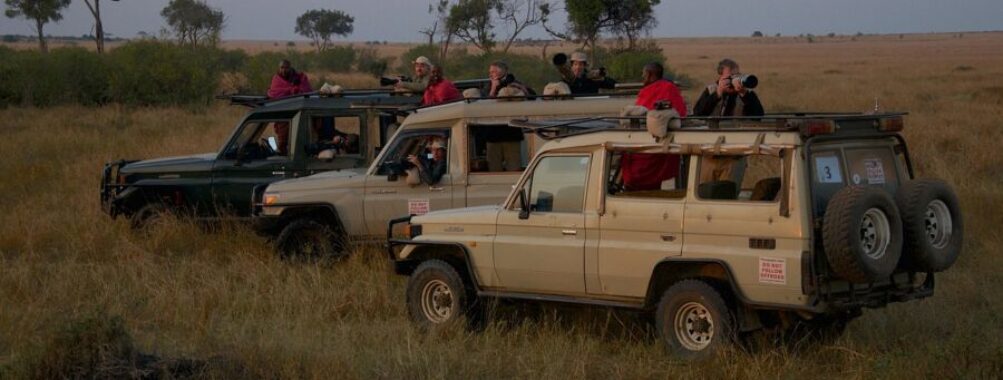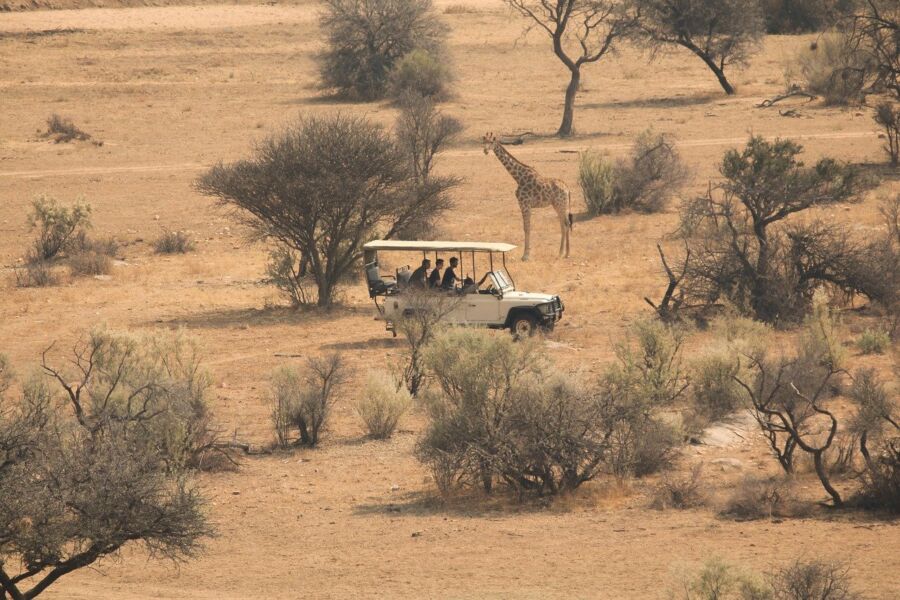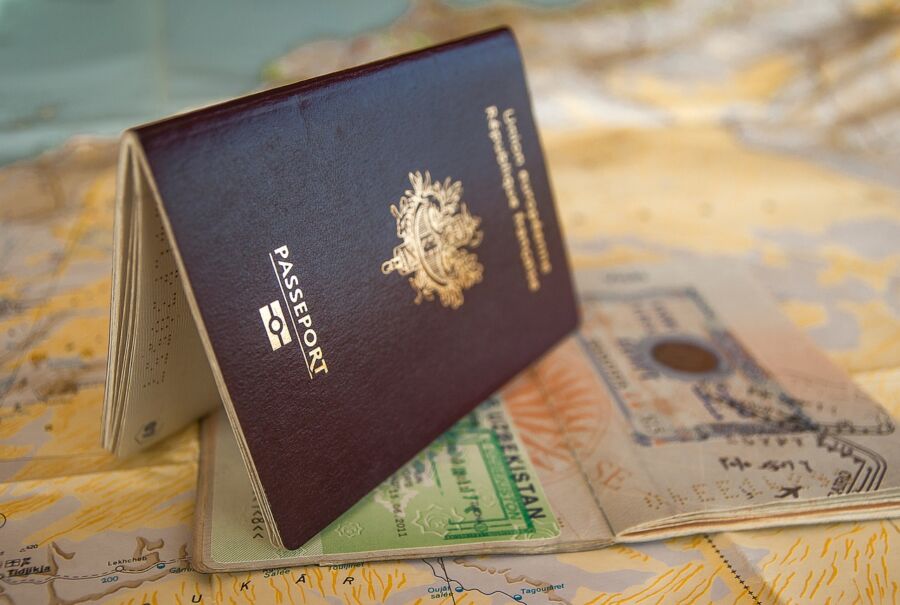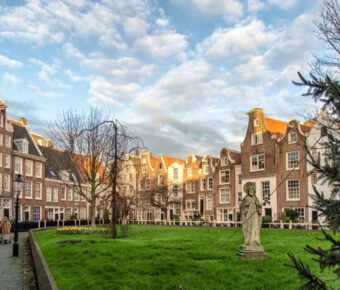
Africa Safari Trip Cost: Luxury Dreams Under $5000
Planning an African safari is a dream for many travelers, but the cost can be a major concern. An African safari typically costs between $300 to $1,850 per person per day, depending on the destination and level of luxury. This wide range means there’s a safari for almost every budget. You’ll find more affordable options in Southern Africa, while East African safaris tend to be pricier.
Your safari adventure can include amazing experiences like watching the Great Wildebeest Migration in Tanzania or tracking gorillas in Rwanda. The cost covers things like park fees, lodging, guided game drives, and sometimes domestic flights. Keep in mind that some activities, like gorilla trekking in Rwanda, have extra fees.
When budgeting for your safari, think about what’s most important to you. Do you want luxury lodges or are you okay with basic camps? How many days do you want to spend on safari? Answering these questions will help you plan a trip that fits your budget and gives you the African adventure you’ve been dreaming of.
Contents
- Key Takeaways
- Understanding Safari Costs
- Factors Influencing Safari Prices
- Accommodation Types and Prices
- Transportation Expenses
- Seasonal Cost Variations
- Choosing Your Safari Destination
- Popular Safari Countries and Regions
- Iconic Wildlife and Safari Experiences
- Specific Costs to Consider for Your Safari
- Daily Safari Expenses
- Park and Conservation Fees
- Extra Costs for Activities and Excursions
- Planning for Meals and Beverages
- Budgeting for Your African Safari
- Creating a Safari Budget
- Money-Saving Tips for Savvy Travelers
- Comparing Package Deals and Self-Drive Safaris
- Additional Practical Considerations
- Health and Safety Requirements
- Understanding Visa and Insurance Costs
- Managing Currency and Exchange Rates
- Preparing for Your Safari Adventure
- Packing Essentials and Gear
- Choosing the Right Time to Travel
- Booking Flights and Accommodations
- More Travel Guides
Key Takeaways
- Safari costs range from $300 to $1,850 per person daily based on destination and luxury level
- Southern Africa offers more budget-friendly options compared to East Africa
- Your budget should account for park fees, lodging, game drives, and special activity costs
Understanding Safari Costs
Safari prices can vary widely based on several key factors. Let’s break down the main elements that affect how much you’ll spend on your African adventure.
Factors Influencing Safari Prices
The cost of your safari depends on where you go and when. Kenya and Tanzania are pricier than some other countries. Luxury lodges cost more than basic camps. The time of year matters too. High season (July to October) is most expensive. Low season (April to May) offers better deals.
Park fees add up fast. They can range from $20 to $100 per day. Some parks, like Ngorongoro Crater, charge more.
Group size affects price too. Joining a group tour can save money. Private safaris cost more but give you more control.
Length of stay is another big factor. Longer trips usually cost less per day. But the total price goes up, of course.
Accommodation Types and Prices
Safari lodges come in all shapes and sizes. Basic camps might cost $150-$300 per night. Mid-range lodges run $300-$600. Luxury spots can easily top $1,000 a night.
What do you get for your money? Basic camps offer simple rooms and shared bathrooms. Mid-range lodges have nicer rooms and better food. Luxury lodges pull out all the stops with amazing views, pools, and gourmet meals.
Some places include game drives in their rates. Others charge extra. Always check what’s included before you book.
Remember, most safaris use all-inclusive pricing. This covers your room, meals, and some activities.
Transportation Expenses
Getting to Africa is often the biggest cost. International flights can range from $800 to $2,000 or more. Comparing flight prices can help you save.
Once you’re there, you’ll need to get around. Some safaris include transfers between camps. Others don’t. Budget $200-$500 for in-country flights if needed.
Many safaris use 4×4 vehicles for game drives. These are usually included in your package. If you’re doing a self-drive safari, renting a car might cost $50-$100 per day.
Seasonal Cost Variations
Safari prices change with the seasons. High season (June to October) is most expensive. This is when weather is best and wildlife viewing peaks.
Low season (March to May) offers the best deals. But there’s a catch – it’s rainy season in many places. Some camps even close.
Shoulder season (November to February) can be a good compromise. Prices are lower than peak season, but weather is still decent.
Keep in mind that some experiences, like the Great Migration, only happen at certain times. You might have to pay peak prices to see specific events.
Choosing Your Safari Destination

Picking the right safari spot can make or break your trip. Your choice affects what you’ll see, how much you’ll spend, and the overall vibe of your adventure.
Popular Safari Countries and Regions
East Africa is a top pick for many safari-goers. Kenya’s Maasai Mara and Tanzania’s Serengeti are famous for the Great Wildebeest Migration. You can watch millions of animals on the move – it’s a sight you won’t forget! These parks also offer year-round wildlife viewing.
Southern Africa has its own charms. South Africa’s Kruger National Park is great for first-timers. It’s easy to get around and has lots of animals. Botswana’s Okavango Delta is perfect if you want a more off-the-beaten-path experience. It’s pricier, but the scenery is out of this world.
Don’t forget about Zambia and Zimbabwe. They share Victoria Falls, one of the world’s biggest waterfalls. It’s a great add-on to any safari trip.
Iconic Wildlife and Safari Experiences
Each safari spot has its own star attractions. In East Africa, you can see the “Big Five” – lions, elephants, buffalo, leopards, and rhinos. The Ngorongoro Crater in Tanzania is like a natural zoo. It’s packed with animals in a small area.
In Southern Africa, you might spot rare creatures like wild dogs or black rhinos. Botswana is known for its huge elephant herds. In South Africa, you can often get closer to animals in private reserves.
For a unique experience, try gorilla trekking in Rwanda or Uganda. It’s pricey, but seeing these gentle giants up close is unforgettable. Just remember, each place has its own peak seasons and costs. Plan ahead to get the best deal!
Specific Costs to Consider for Your Safari

Planning a safari can be tricky with all the different expenses to factor in. Let’s break down the main costs you’ll need to budget for to make your African wildlife adventure a reality.
Daily Safari Expenses
Your day-to-day costs will make up a big chunk of your safari budget. Accommodation is usually the biggest expense. You can expect to pay anywhere from $125 to $1,500 per person per night, depending on how fancy you want to go. Budget camps might run around $150, while mid-range lodges average $350. If you’re after luxury, be ready to shell out $500 to $2,000+ per night for high-end lodges and exclusive camps.
Transport is another daily cost to consider. Game drives in 4×4 vehicles are typically included in your lodge fees. But if you’re doing a self-drive safari, factor in car rental and fuel costs.
Don’t forget about tipping! It’s customary to tip your guides, drivers, and camp staff. Budget about $10-20 per person per day for this.
Park and Conservation Fees
Entry fees for national parks and reserves are a must-pay cost for any safari. These fees help fund conservation efforts and park maintenance. Prices vary widely depending on the country and specific park.
In Tanzania, for example, Serengeti National Park charges $70 per adult per day. Kenya’s Masai Mara Reserve costs about $80 per day for non-residents. South African parks tend to be cheaper, with Kruger National Park charging around $25 per day for international visitors.
Some countries also charge a one-time conservation fee on top of daily park fees. In Tanzania, this is about $50 per person. Remember, these fees often need to be paid in cash, so plan ahead!
Extra Costs for Activities and Excursions
While game drives are usually included in your safari package, other activities might cost extra. A hot air balloon ride over the Serengeti can set you back $500-600 per person. But it’s an unforgettable experience floating above the plains at sunrise!
Walking safaris, night drives, and cultural village visits are other popular add-ons. Prices vary, but budget $50-150 per person for these activities. If you’re keen on seeing specific animals, like gorillas in Rwanda, permits can be pricey. A gorilla trekking permit costs a whopping $1,500 per person!
For a wider range of excursion options, check out Viator’s selection of safari activities. They offer everything from guided nature walks to photography tours.
Planning for Meals and Beverages
Food and drinks are often included in safari lodge rates, especially at all-inclusive camps. But it’s good to know what to expect. Meals at safari camps are usually hearty and plentiful, with a mix of local and international dishes.
If your package doesn’t include all meals, budget about $30-50 per person per day for food. Drinks, especially alcohol, can add up quickly. Some camps include house wine and beer, but premium spirits are usually extra.
For self-drive safaris, you might need to buy and prepare your own food. Stock up on supplies in larger towns before entering parks. Don’t forget to bring plenty of water!
Budgeting for Your African Safari
Planning a safari can be tricky, but with smart budgeting, you can make your dream trip a reality. Let’s break down the costs and explore ways to save money without sacrificing the experience.
Creating a Safari Budget
Start by setting a realistic budget for your African adventure. Costs can vary widely, from $150 to $2,000 per person per day. Budget safaris might run $150-$300 daily, while mid-range options typically cost $350-$600. Luxury safaris can easily exceed $1,000 per day.
Remember to factor in:
- Accommodation
- Transportation (flights, transfers, game drives)
- Park fees
- Meals and drinks
- Tips for guides and staff
- Visas and travel insurance
Don’t forget extras like souvenirs or optional activities. It’s wise to add a 10-15% buffer for unexpected expenses.
Money-Saving Tips for Savvy Travelers
You can trim costs without missing out on the safari magic. Try these tips:
- Travel during shoulder season (April-May or November)
- Choose less popular parks
- Opt for group safaris instead of private tours
- Mix budget and mid-range accommodations
- Book vacation rentals for longer stays
Consider camping safaris for a more affordable, immersive experience. They’re a great way to connect with nature and save money.
Comparing Package Deals and Self-Drive Safaris
Package deals often include lodging, meals, and game drives. They’re convenient and can be cost-effective, especially for first-timers. Prices vary, but expect to pay $200-$500 per day for mid-range packages.
Self-drive safaris give you more freedom and can be cheaper. You’ll need to rent a 4×4, book accommodations, and pay park fees separately. This option works well if you’re comfortable navigating and planning your own itinerary.
Remember, the cheapest option isn’t always the best value. Balance cost with the quality of your safari experience to make the most of your African adventure.
Additional Practical Considerations

Planning an African safari involves more than just booking flights and lodging. You’ll need to consider several important factors to ensure a smooth and safe trip.
Health and Safety Requirements
Before you jet off to Africa, you’ll want to take care of some key health and safety matters. First up, vaccinations. Chat with your doctor about which shots you need. Your doctor might suggest shots like yellow fever, hepatitis A, and typhoid. Don’t forget to pack anti-malaria meds too.
Travel insurance is a must. Look for a policy that covers medical emergencies and evacuation. It might seem pricey, but it’s way cheaper than footing a massive hospital bill if something goes wrong. Prices vary, but expect to pay around $100-200 for a typical 10-day safari trip.
Staying healthy on safari means being smart. Drink bottled water, use bug spray, and listen to your guide’s safety tips. A basic first aid kit is handy too.
Understanding Visa and Insurance Costs
Visa fees can sneak up on you if you’re not prepared. Most African countries charge for entry. Prices vary wildly – from $30 in Kenya to $100 for Tanzania. Some countries offer online visas, while others make you apply at the embassy.
You might need multiple visas if your safari crosses borders. Factor in processing time too. Rush fees can double the cost if you’re in a hurry.
Insurance is another cost to budget for. A good travel insurance policy might set you back $5-10 per day. It’s worth shopping around to find the best deal. Some credit cards offer travel insurance, so check if yours does before buying a separate policy.
Managing Currency and Exchange Rates
Money matters can get tricky in Africa. Many safari spots prefer cash, often US dollars. Bring crisp, new bills – old or torn ones might be rejected.
Exchange rates can impact your budget big time. Keep an eye on rates before you go. It’s usually cheaper to exchange money once you’re in Africa rather than at home.
ATMs are available in cities, but can be scarce in rural areas. Bring enough cash to cover your needs. Some lodges accept credit cards, but often with hefty fees.
Tipping is expected on safari. Budget about $10-20 per day for your guide and $5-10 for other staff. U.S. dollars work well for tips.
Preparing for Your Safari Adventure

Getting ready for an African safari takes some planning. You’ll need to pack the right gear, choose when to go, and book your travel. Let’s break down the key steps to prepare for your unforgettable wildlife adventure.
Packing Essentials and Gear
Packing smart is crucial for a comfortable safari. Bring neutral-colored clothes like khaki, olive, and tan to blend in with the environment. Pack layers for chilly mornings and hot afternoons. Don’t forget:
- Comfortable walking shoes
- Wide-brimmed hat
- Sunglasses and sunscreen
- Insect repellent
- Binoculars
- Camera with extra batteries
A small daypack is handy for game drives. Bring any medications you need, plus a basic first-aid kit. Many safari accommodations provide toiletries, but pack your own just in case.
Choosing the Right Time to Travel
The best time for your safari depends on what you want to see. Dry season (June to October) is great for wildlife viewing as animals gather around water sources. But it’s also peak tourist season with higher prices.
Wet season (November to May) means lush scenery and baby animals. You might find better deals, but some roads can be muddy. Avoid school holidays if you want smaller crowds.
Consider the highlights of each destination. For example, the wildebeest migration in Kenya and Tanzania happens from July to October.
Booking Flights and Accommodations
Book your safari 6-12 months in advance, especially if you’re traveling during peak season. Look for package deals that include flights, transfers, and lodging. This can save you money and hassle.
For flights, compare prices on different airlines. Major hubs like Nairobi or Cape Town are good places to fly into. After that, you can take smaller planes to your safari destination.
Your level of accommodations affects the cost. Options range from basic camping to luxury lodges. Mid-range lodges offer a good balance of comfort and value. Book early for the best choices, especially in popular spots like Botswana or Kenya.



